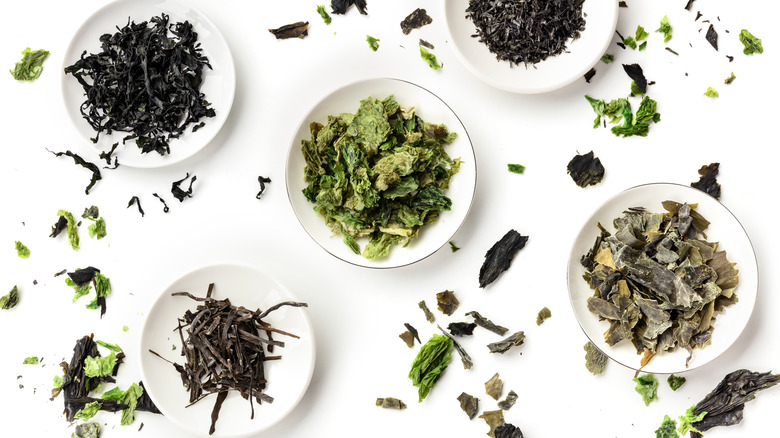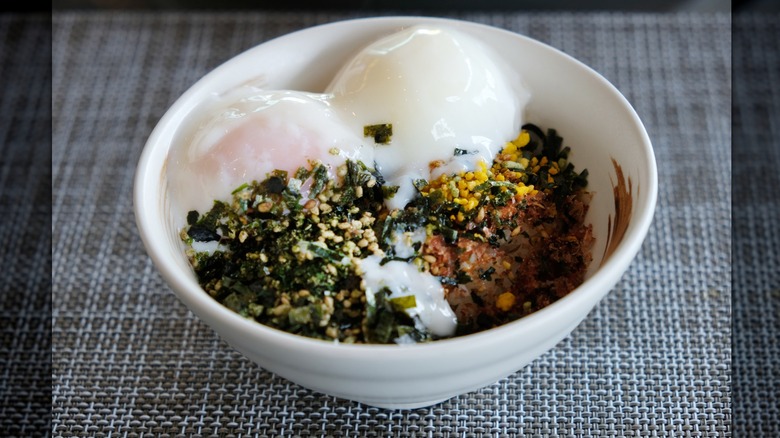Seaweed Is The Ultimate Salty Ingredient Swap For Breadcrumbs
Breadcrumbs — be they homemade or store-bought, finely pulverized or craggy panko crumbs — are an excellent way to add crunch to the exterior of fried foods. But they can be a bit one-note and sometimes pick up more oil in the cooking process than we intended. If you're looking for an alternative to breadcrumbs that adds a tremendous amount of flavor without all the heft, turn to seaweed flakes.
Most of us only encounter seaweed washed up on a beach, when swimming in the ocean or wrapped around pieces of maki and nori. Yet this maritime macroalgae is a wonderfully versatile ingredient with which you should become more acquainted. It has been prized as a source of nutrition and flavoring agent by coastal cultures for centuries, bringing the flavor of the ocean — along with savory vegetal notes — to the plate.
As a breading, Italian chef Marianna Vitale of Neapolitan restaurant Sud tells Fine Dining Lovers that seaweed needs to be fresh or reconstituted if dried. That may seem counter to the result, but when wrapped around a piece of fish, the seaweed does two almost magical things. First, it insulates the filet, keeping it moist and tender. Second, it browns in the oil or fat used and renders into a salty, crispy coating that adds texture and a further note of umami to the dish.
Seaweed: a worldwide ingredient
Seaweed is visible macroalgae that is divided into three categories: brown, red, and green. While most Americans associate it with Japanese and other Asian cuisines, it is employed the world over and is only growing in popularity. In Welsh cuisine, laverbread is a boiled seaweed paste that is mixed with oats to make lavercakes, an integral part of the full Welsh breakfast. Chilean and Peruvian cuisines have a thin seaweed called yuyo that is used in various stews and ceviche. And in the French province of Brittany, seaweed is used to flavor gourmet butter.
The fact that it is plentiful, sustainable to harvest, and delicious are not the only reasons seaweed is so widely consumed. It is also packed with health benefits, according to BBC Good Food. Besides being high in protein and dietary fiber and low in fat and calories, seaweed contains several key nutrients ranging in density across the many varieties. Among them are iodine, which is important to healthy thyroid function, antioxidant vitamins A, C, and E, and omega-3 fatty acids that are great for the heart.
If you're now intrigued by seaweed but unwilling to give up the classic crunch of a breadcrumb coating, take heart. You can actually have the best of both worlds by combining dried seaweed into breadcrumbs (a sort of Western furikake) to create a crunchy exterior that is redolent of the sea but still as hearty as what you're used to.

